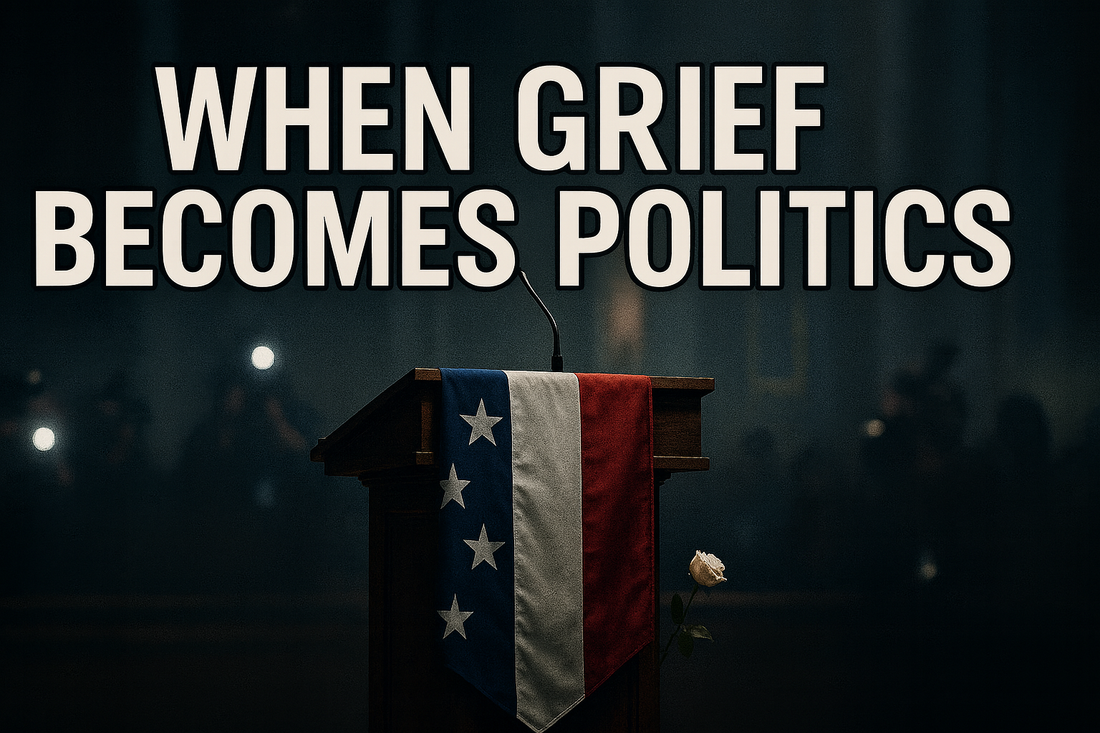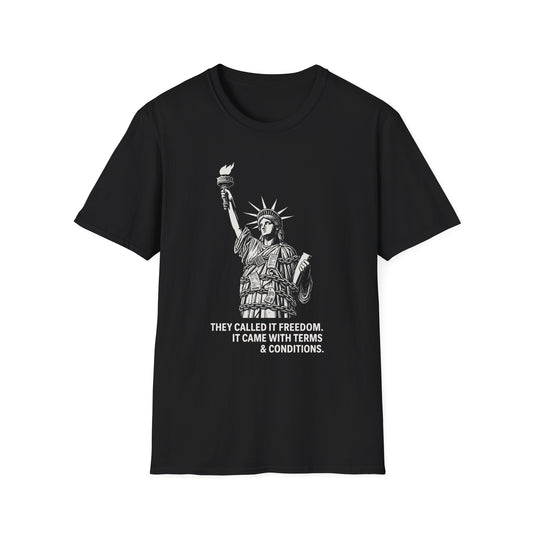
When Political Mourning Becomes a Rallying Cry: Charlie Kirk’s Memorial and the Weaponization of Grief
Mourning as a Public Spectacle
Grief used to be something quiet. A family gathered in silence, a community huddled in prayer, and the act of saying goodbye was private, sacred, and unspoken. But in America 2025, even death has a stage. The recent memorial for Charlie Kirk proved just that. What could have been a solemn moment of reflection turned into something larger, louder, and unmistakably political. It wasn’t just about honoring a man’s life — it became a declaration, a rally, and a flashpoint in the nation’s endless culture war.
Kirk’s death was shocking enough to his supporters, but the way his passing was immediately pulled into the arena of politics was even more jarring. The memorial drew crowds far beyond family and friends. Cameras lined the walls, influencers livestreamed the speeches, and hashtags trended before the casket was even lowered. A space that might have been meant for grief was transformed into a theater of ideology, where loss became a tool and mourning became a performance.
It wasn’t always this way. In the past, memorials and funerals of public figures held a kind of restraint. Yes, leaders might have spoken about values or legacy, but the moment still belonged to the person who had passed and the family who carried the weight of their absence. What we’re seeing now is something different: a blurring of lines where mourning isn’t just communal — it’s mobilized. The grief of one becomes the rallying cry for millions, and the death of a single figure becomes ammunition for a broader narrative.
There’s nothing inherently new about political funerals — history is full of them. The deaths of John F. Kennedy, Martin Luther King Jr., or Ruth Bader Ginsburg all became national events, marked by political undertones. But there’s a shift in scale and intensity now. In today’s media environment, everything is accelerated, amplified, and live-streamed. There is no space for pause, no breath before the spin begins. Within hours of Kirk’s passing, pundits were already debating what it meant for the conservative movement, how his legacy should be framed, and what kind of call-to-action his death represented. The memorial itself mirrored that urgency — grief weaponized in real time.
The danger of this transformation is that the very human act of mourning is being reshaped into spectacle. The focus moves away from the individual’s life and toward the political gain to be made from their absence. For some, the memorial was uplifting — a sign of strength, a show of unity, a way to prove the movement lives on. For others, it was a grim reminder of how little room is left for apolitical humanity. In the middle stood the family and close friends, caught between personal loss and public theater.
As cameras panned the crowd and commentators dissected the speeches, one truth became clear: grief no longer exists in a vacuum. It’s content now. It’s hashtags, headlines, and click-through rates. Charlie Kirk’s memorial wasn’t just about one man. It was about what America has become — a place where even our most vulnerable emotions are transformed into platforms.
The Weaponization of Grief
The phrase “never let a good crisis go to waste” has long echoed through political strategy circles. In America today, that same logic applies to death itself. Charlie Kirk’s memorial didn’t just honor a life; it became an opportunity — a carefully staged moment where grief was channeled into power. What should have been a moment of mourning turned into a podium, a call-to-action, a spotlight for agendas waiting to be pushed.
At the memorial, speakers didn’t just talk about Kirk as a son, a husband, or a friend. They framed him as a symbol. His life was painted not simply as a biography but as a blueprint, a story that could be lifted and weaponized for political narrative. This wasn’t just a service — it was strategy. Every line delivered was calculated to resonate beyond the room, reaching audiences across social media feeds, podcasts, and primetime segments.
This is the dangerous alchemy of grief in 2025: sorrow transformed into fuel. Death is no longer the end of a story — it’s the beginning of a campaign. What was once sacred has become an accelerant, capable of rallying the faithful, silencing the doubtful, and polarizing the undecided.
We’ve seen this before, though in smaller doses. The funerals of political titans like John McCain or Ruth Bader Ginsburg were framed in ways that reinforced their respective causes. But the speed and intensity of Kirk’s memorial reveal something different: the complete collapse of the barrier between personal tragedy and public weaponry. Within hours, clips were circulating online framed not as eulogies, but as “battle cries.” Memes emerged, soundbites went viral, and his death was reframed as a symbol of resistance, legacy, and unfinished war.
The psychology behind it is simple: grief is powerful because it’s universal. Everyone knows what it feels like to lose someone. By framing a death as not just a loss but as a threat to an entire movement, leaders can mobilize emotions on a scale no policy speech could ever reach. Anger, sadness, loyalty — all bundled together into an unstoppable wave of momentum. It’s effective. It’s intoxicating. And it’s corrosive.
Because the more grief is used as a weapon, the less space is left for real mourning. Families become figureheads, survivors become props, and the actual complexity of human loss gets bulldozed in service of “the message.” In the case of Charlie Kirk, supporters were urged not just to honor his memory but to carry his “mission” forward. That framing doesn’t leave much room for silence, or tears, or simply remembering the man outside of politics. It demands action, and in doing so, transforms mourning into mobilization.
There’s something unsettling about this shift. When even death is converted into political capital, what’s left that’s untouchable? Where do we draw the line between honoring someone’s life and exploiting it? The answer, right now, seems to be nowhere. Everything is up for grabs, and grief is just the latest currency in a country that knows no pause button.
Grief as Division, Not Unity
Traditionally, moments of mourning have carried the potential to unite. A tragedy could soften divisions, at least temporarily, reminding people of their shared humanity. But in America’s current climate, even death doesn’t bring people closer. Instead, it seems to drive the wedge deeper. Charlie Kirk’s memorial was supposed to be a moment of remembrance, but it quickly became another battlefield where grief sharpened existing divides instead of bridging them.
The reactions made this plain. Supporters framed the memorial as proof of resilience, a moment to double down on their cause. Critics, meanwhile, saw the spectacle as opportunism — grief hijacked to push talking points and harden political identities. The divide wasn’t just visible in headlines or Twitter threads; it was visceral. For every heartfelt tribute, there was a counterpoint accusing the event of being less about mourning and more about messaging. Instead of grief fostering empathy, it became another wedge issue — a mirror reflecting the nation’s polarization back at itself.
This isn’t unique to Kirk. We’ve seen it before in America’s cycle of loss and commentary. A school shooting becomes the ground zero of a Second Amendment debate. A celebrity overdose turns into a referendum on the healthcare system. Even the most private moments of human pain are pulled apart and reframed through the lens of politics and culture wars. The result isn’t unity. It’s amplification of existing tensions, where people don’t come together to heal but separate further into tribes.
The media environment makes it worse. News outlets, influencers, and algorithms thrive on outrage. A quiet, solemn reflection doesn’t trend. A fiery eulogy filled with coded language and pointed messages does. And so that’s what gets clipped, tweeted, and recycled — grief stripped of intimacy, rebranded as ammunition. The spectacle grows while the silence, the part that matters most to those closest to the deceased, gets buried.
What’s lost in this frenzy is the family. The people who actually knew Charlie Kirk as a person rather than a symbol are the ones least served by this public transformation of grief. They are caught in a storm where their private mourning becomes public property, dissected and debated by strangers who never sat at their dinner table. The pain of losing someone is already unbearable. Having that pain co-opted and politicized multiplies the trauma.
The bigger danger, though, lies in what this says about the country. If even grief — one of the few universal human experiences — can no longer bring us closer, then what can? The inability to mourn collectively, without weaponizing loss, suggests something is broken at the cultural level. It reveals how thoroughly division has taken root in America’s psyche. Even death is no longer sacred; it’s partisan.
Charlie Kirk’s memorial was framed as a call to arms, not a call to pause. Instead of grief serving as a mirror to our shared fragility, it became another tool to mark difference. In that sense, the event wasn’t just about one man’s passing. It was a case study in how far America has drifted from the idea of unity — and how hard it will be to find a way back.
The Future of Public Mourning
If Charlie Kirk’s memorial revealed anything, it’s that America has entered a new era where even grief isn’t safe from the churn of politics and media. The question is: what comes next? What does it mean for a society when the most private human experience is repackaged as content, a rallying cry, or a weapon?
One possibility is that this becomes the permanent norm. In a world where every phone is a camera and every event is a broadcast, it may be impossible to separate mourning from spectacle. Funerals and memorials will continue to double as campaign stages, where grief is scripted to serve causes larger than the individuals themselves. Death will no longer mark an ending but instead fuel the endless cycle of discourse, hashtags, and tribal conflict.
The consequences of this shift extend beyond politics. They touch the very core of how communities process trauma. When mourning is rushed, reframed, and weaponized, people are denied the chance to heal. Grief becomes unfinished business, lingering not as a memory of the person lost but as a trigger for the battles their passing set in motion. Families are left with little space to grieve in peace. Survivors become unwilling avatars for ideologies they never chose. And the dead themselves risk being remembered more as symbols than as humans.
But there’s another possibility, however fragile: a pushback. The same culture that thrives on outrage has also created a countercurrent — a hunger for authenticity, for spaces untouched by spin. We see glimpses of it in communities that refuse cameras at funerals, in families who limit attendance to protect intimacy, in grassroots movements that resist turning tragedy into slogans. These pockets of resistance suggest that not everyone is willing to let grief be colonized by politics. The question is whether those quieter choices can withstand the volume of the spectacle machine.
The broader implications are sobering. If we cannot mourn without division, what does that say about our future ability to face collective crises? Climate disasters, wars, pandemics — all come with loss on massive scales. If every loss becomes political capital, the work of rebuilding, healing, and remembering will remain secondary to the endless churn of outrage. A society that cannot mourn together is a society that struggles to imagine together, to heal together, or to move forward together.
Charlie Kirk’s memorial was not just a service for one man. It was a reflection of where America stands — a place where grief is content, mourning is mobilization, and unity is a relic. The tragedy is not just the loss of a life, but the loss of a cultural space where people could once set aside politics long enough to simply feel.
And maybe that’s the darkest truth of all. When even grief is weaponized, there is no pause, no sanctuary. Only the relentless demand to take sides, perform, and keep the spectacle alive. In that sense, the memorial wasn’t just a farewell — it was a warning. If death can no longer unite us, what possibly can?







